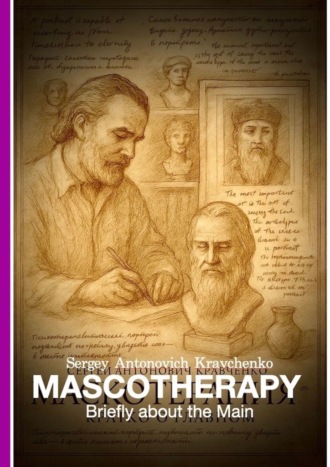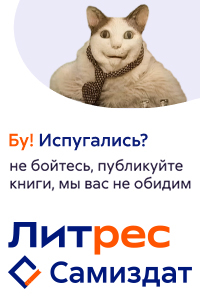
Полная версия
Mascotherapy: Briefly about the Main
But were they true mirrors, or distorted lenses?
In prehistoric imagery, symbolism dominated: the face appeared as a generalized sign of the clan, the spirit, or the totem.
Egyptian images were schematic, frozen in eternity.
Greek sculpture reached an apogee – portraying not a specific face, but the ideal body, praising harmony and proportion.
Rome introduced the psychological portrait to the world – a face marked by age, character, and suffering.
In Christian Europe, the visages of saints detached from the body and ascended toward the divine, gradually losing touch with individuality.
“The human face is the most meaningful of all surfaces,” wrote Georg Simmel.
But how many cultures have dared to study that surface in earnest?
Despite technical progress, modern sculpture is losing its ability to see the face. It flaunts symbolism, abstraction, and postmodern play with meaning, yet shies away from precise and sincere representations of human individuality.
One cannot help but ask:
Do contemporary sculptors – and more broadly, modern people – see their own and others’ faces clearly enough to reflect them in authentic portraits?
Do we see the world we live in – and ourselves within it – accurately and honestly?
In mascotherapy, the sculpted self-portrait becomes the core of the process. Created by one’s own hands from living clay, it undergoes a growth journey – from the size of the heart to the size of the head.
This progression mirrors the inner journey of individuation.
The completion of the portrait coincides with an act of self-knowledge and inner purification.
It is a moment of catharsis, when a person not only recognizes their face – but begins to acknowledge, accept, and love themselves.
“Every true culture begins with respect for the face,” proclaimed Lev Shestov.
Mascotherapy is not merely therapy through art. It is a cultural act. It is the creation of the Face of one’s time.
Today, in the age of digital avatars, formulaic selfies, and social media masks, mascotherapy revives a forgotten ritual – the creation of a true, unique image of the self.
This face is not only therapeutic but historical.
It fixes a person in their inner truth.
It may outlive its creator – as ancient busts outlived their subjects, and as icons endured through the centuries.
Mascotherapy creates the face of the person of our time.
It will transcend time and speak to future generations and civilizations.
Drawing Closer to His Image
This chapter touches on a profound question – is dialogue with the Divine possible through self-portraiture? The author reflects on the connection between the unconscious and the image of God, drawing on Jung, Grof, Freud, personal experience, and specific cases from the practice of mascotherapy. The theme of portrait-making is presented as a path of ethical and spiritual transformation.
To avoid raising suspicions of theological apologetics or a departure from psychology, let me state directly: this is not about religion, but about depth psychology, where archetypal images and inner myths are as real as the symptoms that bring people to therapy.
When Carl Gustav Jung said in an interview that “God is the name I give to the unconscious,” he did not deny religious experience – he was attempting to translate it into the language of scientific psychology.
We cannot study God through natural science methods – the emotional component of this concept is too strong, and perception of it is deeply individual.
But we can study the unconscious, which, according to Jung, contains the same power that humanity has called God for millennia.
“The unconscious and God denote the same reality. God is the symbol of the Self.”
– C. G. Jung, Answer to Job
In mascotherapy, we constantly encounter manifestations of the unconscious, especially in the final stages of portrait work, when a person suddenly sees in their own face something far greater than mere features.
The face begins to speak. And it speaks with the voice of depth.
It is important to remember, however, that the unconscious is not purely “light.” It contains both light and darkness, virtues and vices.
Unlike the traditional image of God – which in most people’s minds is associated with pure light and goodness – the unconscious is like a lake where golden fish and monsters both dwell.
Everything depends on who is looking – and with what intention.
“Hell is also the unconscious, but repressed and abandoned.”
– James Hillman
A psychotherapist, unlike a priest, is not afraid of this shadow.
He enters it to establish dialogue – including with what religious tradition has called the “devil” or “temptation.”
Such dialogue is impossible without an inner movement of the soul.
Jung called this the transcendent function – the capacity to connect consciousness and the unconscious through symbol, image, and dialogue.
“The goal is not to become good, but to become whole.”
– C. G. Jung
Creating a self-portrait in mascotherapy is precisely such a path.
Not a path of self-correction by force of will, but of restoring one’s inner wholeness through the recognition of the true Face.
Allow me to share an example. A few years ago, I was approached by an elderly psychologist from Saint Petersburg – a man in his sixties.
He had just completed a psychology course and was eager to learn the method of mascotherapy.
He told me openly that he lived on a pension and could not afford long-term training. But his desire was so sincere and strong that I agreed to conduct a one-day intensive session.
He had no sculpting skills. Modest, focused, he listened with extraordinary attentiveness.
I gave him the essentials: eight kilograms of sculptural clay, two mirrors, and one instruction – sculpt yourself in life size.
A month later, he sent me a photo of his self-portrait.
The work was far from classical beauty, but it held truth – his inner truth.
In the letter he unexpectedly wrote that he had quit drinking beer, which he had consumed all his adult life:
“I’m no longer drawn to it. It’s like I’m not that person anymore. He – the man in the portrait – doesn’t drink.
And I don’t drink anymore.”
A similar case occurred with one of my students – a young woman.
Конец ознакомительного фрагмента.
Текст предоставлен ООО «Литрес».
Прочитайте эту книгу целиком, купив полную легальную версию на Литрес.
Безопасно оплатить книгу можно банковской картой Visa, MasterCard, Maestro, со счета мобильного телефона, с платежного терминала, в салоне МТС или Связной, через PayPal, WebMoney, Яндекс.Деньги, QIWI Кошелек, бонусными картами или другим удобным Вам способом.



